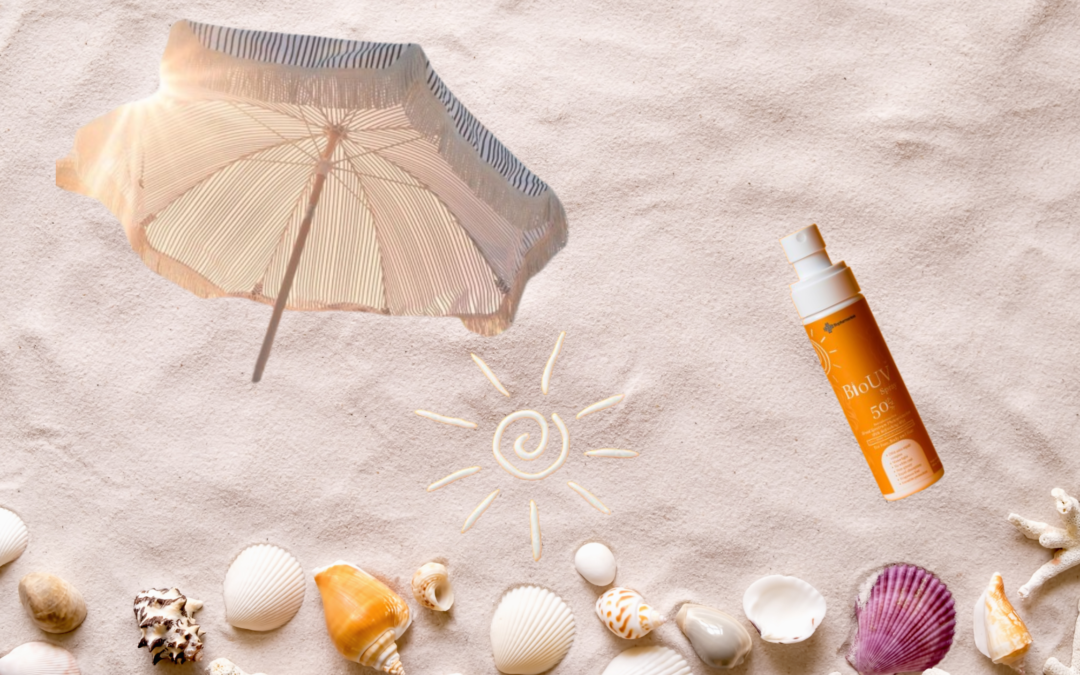Photoaging refers to the skin damage caused by prolonged exposure to ultraviolet (UV) radiation from the sun or artificial sources like tanning beds. It’s essentially premature aging of the skin due to UV exposure. Here are the key aspects of photoaging:
- Wrinkles and fine lines: UV rays break down collagen and elastin fibers, which are responsible for keeping skin firm and elastic.
- Hyperpigmentation: UV exposure triggers excess melanin production, leading to age spots, freckles, and uneven skin tone.
- Loss of skin texture: Skin may become rougher, thinner, and less smooth over time.
- Dryness and dehydration: UV rays can reduce the skin’s moisture levels, leading to dry, flaky skin.
- Elasticity loss: As collagen and elastin fibers weaken, skin becomes looser and saggier.
- Increased risk of skin cancers: Photoaging is linked to mutations in skin cells that can increase the risk of basal cell carcinoma, squamous cell carcinoma, and melanoma.
To help prevent photoaging, it’s crucial to practice sun protection through sunscreen, protective clothing, and avoiding excessive sun exposure.
EFFECT OF UVA AND UVB RAYS ON SKIN.
UVA Rays:
- Penetrate deeper into the skin, affecting the dermis (inner skin layer).
- Contribute to premature aging (wrinkles, fine lines, and sagging).
- Play a major role in sunspots and other pigmentation issues.
- Can weaken the skin’s natural elasticity and collagen.
- Associated with skin cancer risk, though more linked to long-term exposure.
UVB Rays:
- Primarily affect the epidermis (outer skin layer).
- Responsible for sunburns and skin redness.
- Play a significant role in the development of skin cancer (including melanoma).
- Can damage DNA in skin cells, leading to mutations.
- Trigger the skin to produce melanin (tan), but this is a sign of skin damage.
Sun protection is essential for maintaining healthy skin and overall well-being. Here’s why it’s so important:
- Prevent Skin Cancer
Ultraviolet (UV) radiation from the sun can damage skin cells and increase the risk of skin cancers, including melanoma, basal cell carcinoma, and squamous cell carcinoma. Regular use of sunscreen helps reduce this risk.
- Prevent Premature Aging (Photoaging)
UV exposure accelerates the breakdown of collagen and elastin, leading to wrinkles, fine lines, and sagging. It also causes uneven pigmentation, age spots, and a rough texture, which are all signs of photoaging.
- Reduce Sunburns
Sunscreen helps protect against painful sunburns caused by UVB rays. Frequent sunburns can increase your risk of skin cancer and make skin more prone to aging.
- Protect Against Hyperpigmentation
UV rays trigger melanin production, which can lead to dark spots, freckles, and uneven skin tone. Sun protection helps prevent these pigmentation issues and promotes a more even complexion.
- Maintain Skin Health
Protecting your skin from harmful UV rays helps maintain its natural barrier, keeping it hydrated and healthy. UV exposure can weaken the skin’s ability to retain moisture, making it dry and more prone to irritation.
- Protects Eyes
UV rays can also harm your eyes, leading to conditions like cataracts and macular degeneration. Wearing sunglasses with UV protection is crucial for eye health.
- Prevent DNA Damage
UV radiation can damage the DNA in skin cells, leading to mutations that may eventually result in cancer. Sunscreen helps reduce this damage by acting as a barrier against harmful rays.
To be most effective, sunscreen should be applied daily (even on cloudy days) and reapplied every two hours when outdoors, especially if swimming or sweating. It’s also important to wear protective clothing, seek shade, and avoid the sun during peak hours (10 a.m. to 4 p.m.) for maximum protection.

